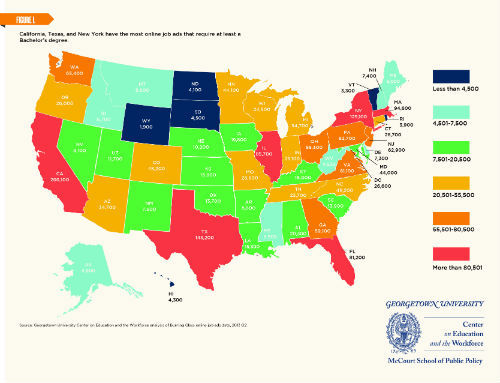
A new report, “State Online College Job Market: Ranking the States,” indicates that Massachusetts, Delaware, and Washington have the most job openings per college graduate. This report, conducted by the Georgetown University Center on Education and the Workforce, uses online job ads to analyze the state college labor market, which is an innovative new approach to measuring this info. This is key information in a time when so many college graduates cannot find work, and don’t know where the best place to start looking would be. Not surprisingly, the study confirms that the most likely profession for college grads to find work will be in STEM (science, technology, engineering, and math), managerial and professional offices, healthcare, and tech.
I talked with Anthony P. Carnevale, the report’s lead author (Director of the Center on Education and the Workforce), who has indicated the “promise of this information is the ability to connect real people with real jobs in real time.”
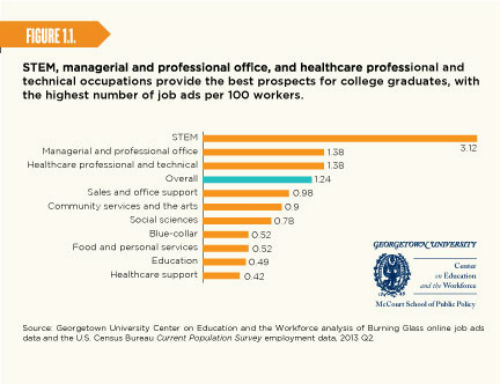
Tony, what findings surprised you most in this report?
One finding people may find surprising is that NY and CA are not necessarily the best place for college graduates to look for a job. While these states offer many job opportunities to college graduates, they also have a large number of college-educated workers, which results in intense competition for these jobs.
Another unexpected finding is how similar top in-demand occupations are for college graduates across states. Software developers, registered nurses and managers are among the most in-demand professionals in nearly every state.
Do people typically think of Massachusetts, Delaware or Washington when they think of places with lots of jobs? Do you think this information will change the locations where students choose to live after graduating?
These states are homes to major universities and corporations. So, it is no surprise that they have favorable job markets for college graduates.
The focus of the report is online job demand, and online job search has become the major way college graduates look for jobs. We hope the information in the report will help college graduates and college students getting ready to graduate to focus their search by identifying states where they will have the best prospects of finding a job in their field. Also, for college-educated job seekers who are limiting their search to a particular geographic area, this information could help them expand their search to nearby states that will offer them more opportunities for finding a job in their career field. College graduates can then make decisions whether to relocate and where to relocate based on the job offers they receive and their personal preferences (distance from family, urban/rural environment, climate, etc.).
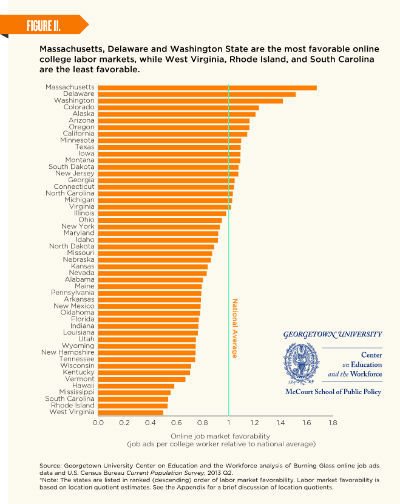
The report indicates that the worst odds of finding a job are in West Virginia, Rhode Island and South Carolina. What are the problems with these markets?
West Virginia and South Carolina are states that have a low concentration of jobs for college graduates and a low share of college-educated workers. This low-skill equilibrium has generally led to lower wages in these two Southern states. This low-wage/low-skill equilibrium is a problem that we have observed in many parts of the South (see report: A Decade Behind) Therefore, these states do not offer many job opportunities to college graduates.
Rhode Island has been one of the states particularly hard hit by the Great Recession, and its unemployment remains one of the highest in the country. The main reason for it to be among those at the bottom in our report is the low employment demand relative to its employment. Rhode Island has faced a number of regulatory and economic challenges, including a persistent state budget deficit, lower educational attainment of its workforce compared to neighboring states of MA and CT, declining household wealth (partially as a result of the housing crash that preceded the Great Recession), and declining investment in public postsecondary education, among other factors.
Within each career field what are the types of jobs that are in highest demand by employers?
We address this question in our earlier report, The Online College Labor Market, where we examine top occupations/career fields and top jobs in each career field nationwide. For example, the most in-demand management jobs include: health services manager, sales manager, and financial manager. The most in-demand computer and mathematics jobs include: software developer, computer worker, and computer systems analyst. The most in-demand healthcare professional and technical jobs include: registered nurse, physician/surgeon, and physical therapist.

Would you say there is a continuum of STEM jobs ranging from the functional types of STEM work to more innovative and creative STEM work?
STEM jobs across the entire spectrum, from functional to creative, are in high demand. In fact, STEM jobs account for the second most in-demand occupation group online, accounting for 28 percent of all online job ads for college graduates. In The Online College Labor Market, we point out different types of STEM jobs, including computer and mathematical science occupations, life and physical science occupations, and architectural and engineering occupations. In-demand functional STEM jobs include workers such as science technicians and computer workers, and in-demand creative STEM jobs include professionals such as software developers and engineers. In addition, STEM competencies, and knowledge and skills associated with STEM occupations, are widely in-demand, with 40% of jobs across the economy demanding these types of abilities.
For more information on the Report.

(All photos are courtesy of Georgetown University)
Join me and globally renowned thought leaders including Sir Michael Barber (UK), Dr. Michael Block (U.S.), Dr. Leon Botstein (U.S.), Professor Clay Christensen (U.S.), Dr. Linda Darling-Hammond (U.S.), Dr. MadhavChavan (India), Professor Michael Fullan (Canada), Professor Howard Gardner (U.S.), Professor Andy Hargreaves (U.S.), Professor Yvonne Hellman (The Netherlands), Professor Kristin Helstad (Norway), Jean Hendrickson (U.S.), Professor Rose Hipkins (New Zealand), Professor Cornelia Hoogland (Canada), Honourable Jeff Johnson (Canada), Mme. Chantal Kaufmann (Belgium), Dr. EijaKauppinen (Finland), State Secretary TapioKosunen (Finland), Professor Dominique Lafontaine (Belgium), Professor Hugh Lauder (UK), Lord Ken Macdonald (UK), Professor Geoff Masters (Australia), Professor Barry McGaw (Australia), Shiv Nadar (India), Professor R. Natarajan (India), Dr. Pak Tee Ng (Singapore), Dr. Denise Pope (US), Sridhar Rajagopalan (India), Dr. Diane Ravitch (U.S.), Richard Wilson Riley (U.S.), Sir Ken Robinson (UK), Professor Pasi Sahlberg (Finland), Professor Manabu Sato (Japan), Andreas Schleicher (PISA, OECD), Dr. Anthony Seldon (UK), Dr. David Shaffer (U.S.), Dr. Kirsten Sivesind (Norway), Chancellor Stephen Spahn (U.S.), Yves Theze (LyceeFrancais U.S.), Professor Charles Ungerleider (Canada), Professor Tony Wagner (U.S.), Sir David Watson (UK), Professor Dylan Wiliam (UK), Dr. Mark Wormald (UK), Professor Theo Wubbels (The Netherlands), Professor Michael Young (UK), and Professor Minxuan Zhang (China) as they explore the big picture education questions that all nations face today.
The Global Search for Education Community Page
C. M. Rubin is the author of two widely read online series for which she received a 2011 Upton Sinclair award, “The Global Search for Education” and “How Will We Read?” She is also the author of three bestselling books, including The Real Alice in Wonderland, is the publisher of CMRubinWorld, and is a Disruptor Foundation Fellow.
Follow C. M. Rubin on Twitter: www.twitter.com/@cmrubinworld




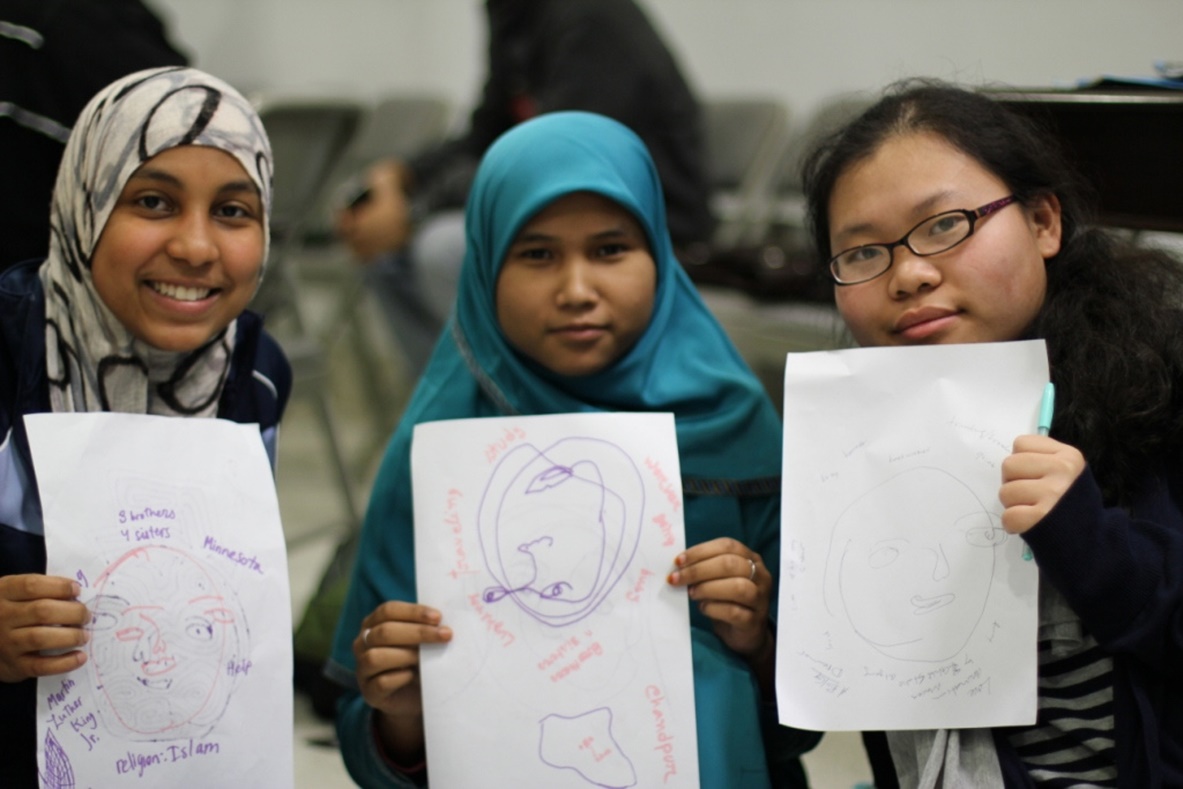
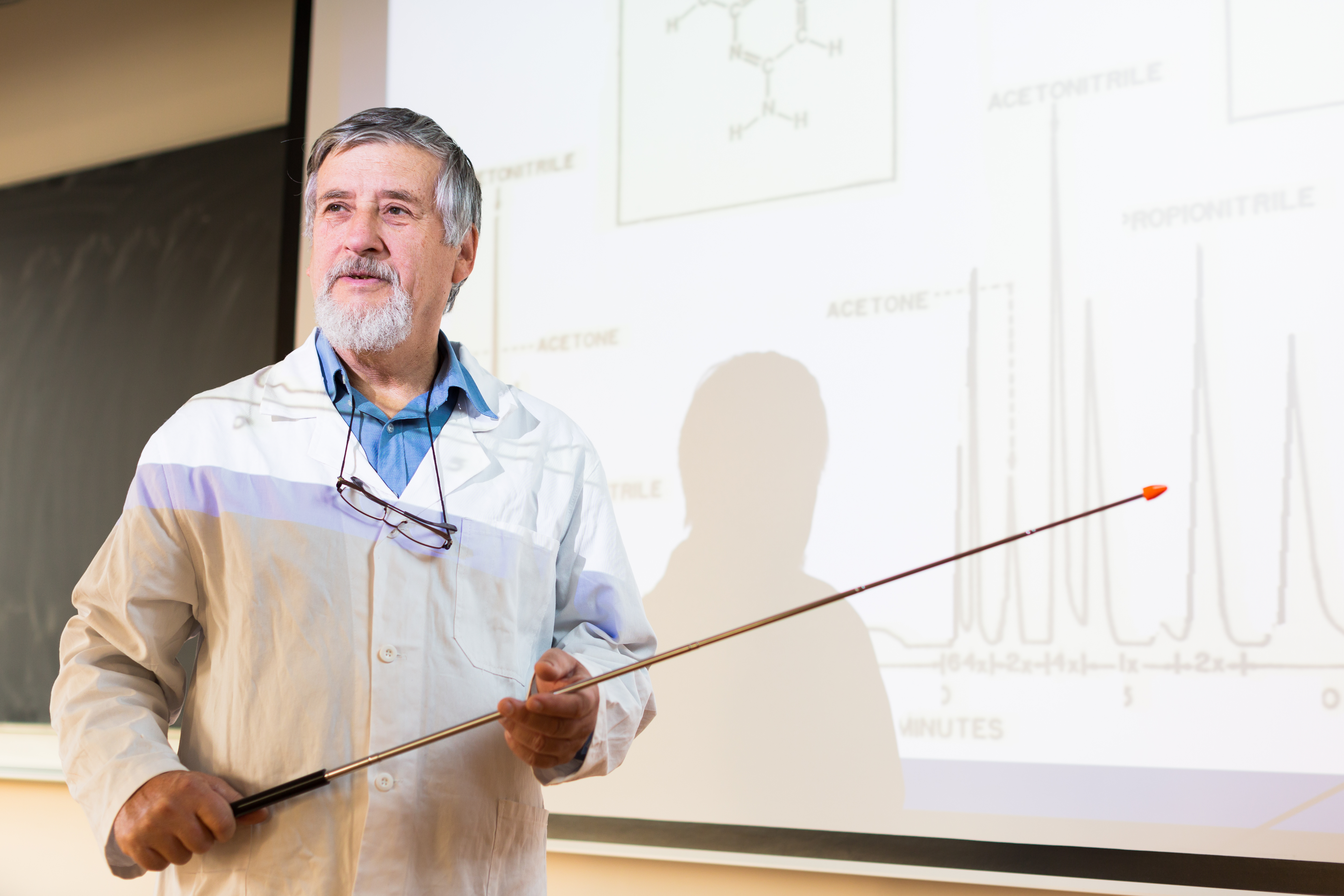
Recent Comments